Introduction
In Summer 2025, I joined Innovative Systems for my first role in User Experience Design. Weeks leading up to the internship, I had naively focused on working on my Figma skills. I truly expected to spend three months drawing beautiful screens for hours on end. Instead, I did something much more meaningful: I discovered what UX design truly entails.
About
Map, Transform, Validate (MTV) is an internal data transformation tool used to prepare data for further use. It has wide ranging applications within the company but was originally built without UX input and failed to fit those applications. My role was to bring a user-centered lens to the redesign.
Starting Point
The team worked in month-long sprints, and I used design thinking and Jira stories to organize and prioritize my work. My stories provided the structure:
- Conduct 4 stakeholder/user interviews
- Analyze existing content
- Define pain points and create a problem statement
- Research competing tools
- Sketch and prototype solutions
- Create a Vision Document
I defined the acceptance criteria and assigned story points to these stories.
Empathize & Research
I worked quickly to learn from senior designers and utilize their feedback. For this phase, I learned the importance of thorough documentation, using Miro and Confluence so my work could serve both myself and future designers.
I conducted a task analysis on the most complex screens to spot inconsistencies and dependencies.
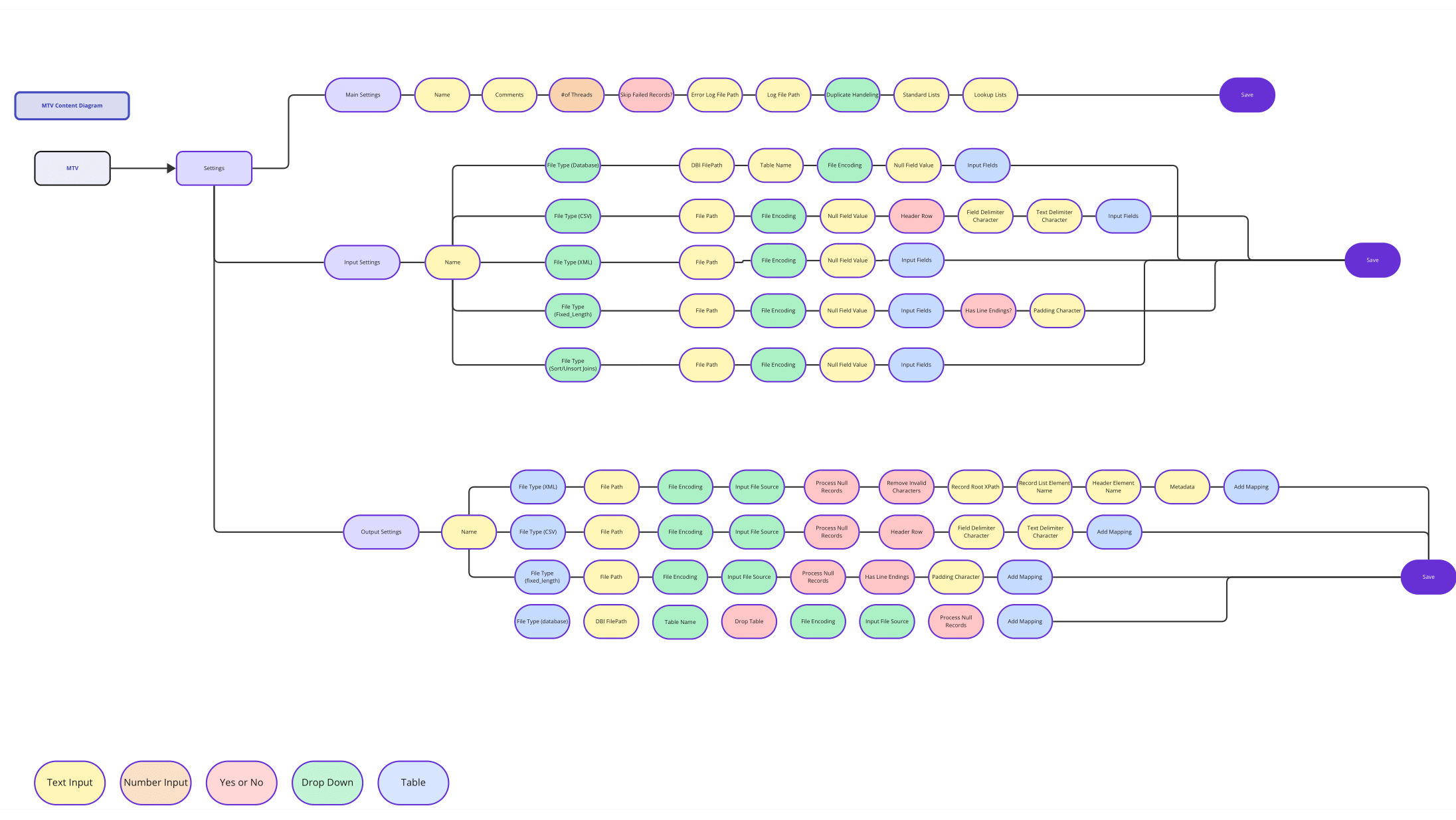
A challenge: MTV had no existing users, I had stakeholders and potential users. The dynamics of those interviews proved to be completely different. I interviewed:
The project manager
To understand business goals and project scope.
A developer of the old system
For insights into the original vision and technical limitations.
A legacy user
To identify existing pain points and must-have workflows.
A potential user
To understand their expectations for a modern tool.
These conversations were complex. Business goals clashed with user expectations, technical constraints pushed against ideal solutions. I was trying to reconcile every opinion.
During a mentoring session, I was explaining how I planned to implement something exactly as one interviewee suggested. A senior designer stopped me and said something like:
“Don’t just implement as the interviewee wants. Dig deeper, understand their goals, weigh their input, and then make the design decision that solves the real problem. That’s your role.”
The reminder shifted my perspective. Instead of feeling pressured to follow every request, I realized I needed to evaluate feedback critically and make independent decisions.
Define
Synthesizing my research, I separated the problem two fold: the business context and the user’s struggle.
Business Context
The company needs a reliable and efficient way to transform data internally. A confusing tool leads to errors, wasted developer time, and impacts project timelines and costs.
User Context
Users tasked with configuring data transformations found the tool fragmented and confusing. Critical features were scattered, making it hard to make sense of the workflow, which led to a lack of confidence.
This led me to frame my problem.
How Might We...
create a cohesive experience that integrates Mappings, Rules, and Processes, so users can configure data transformations confidently and efficiently?
Based on the HMW, I focused on the key pain points to address within the limited timeframe. Here's a look at one of the screens that highlighted the usability issues.
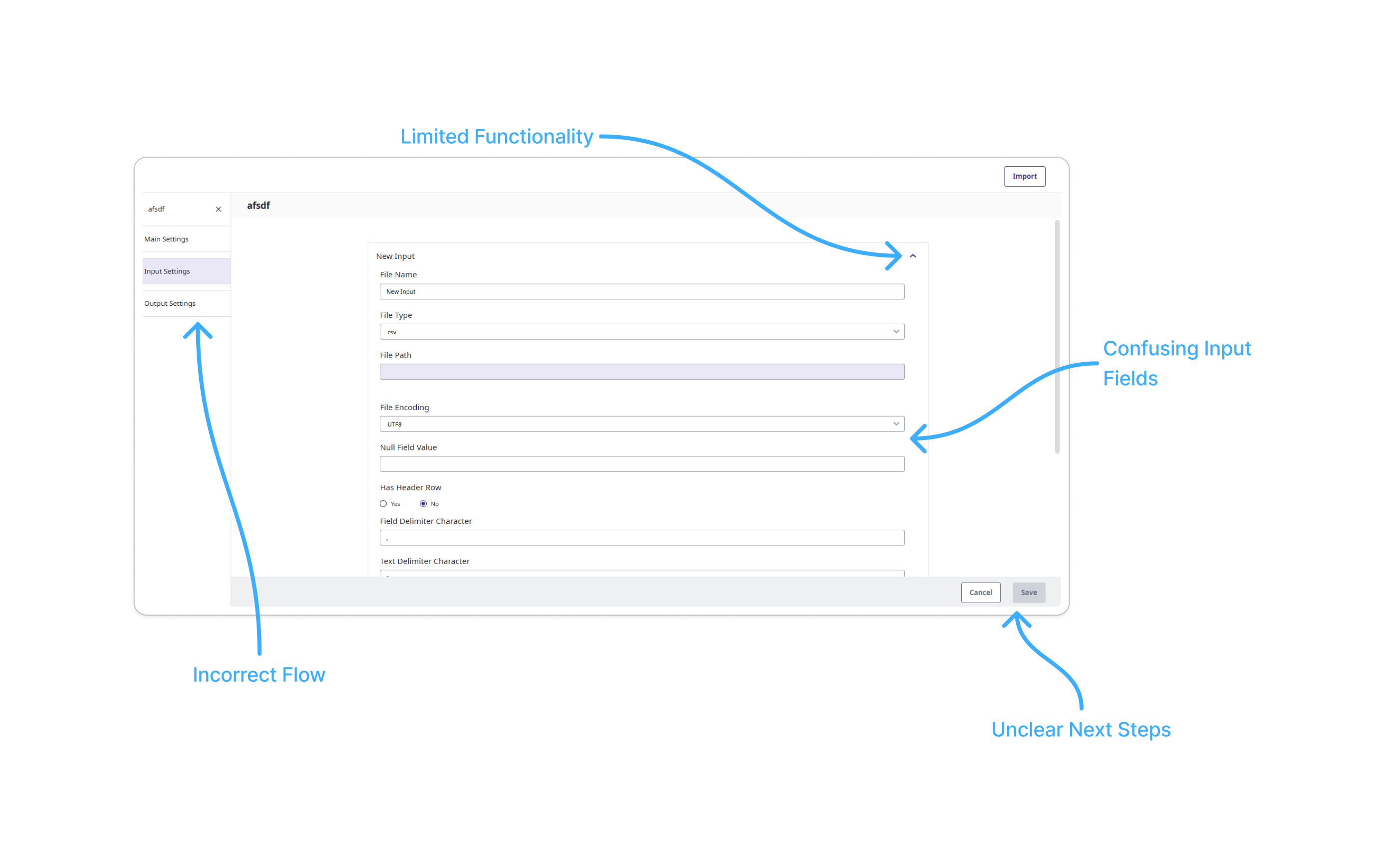
Ideate
Working with senior designers, we conducted whiteboard sessions to generate ideas. These ideas led me to ask deeper questions when I went back to the interviews. My approach was focused on understanding how a user wants to move through this program.
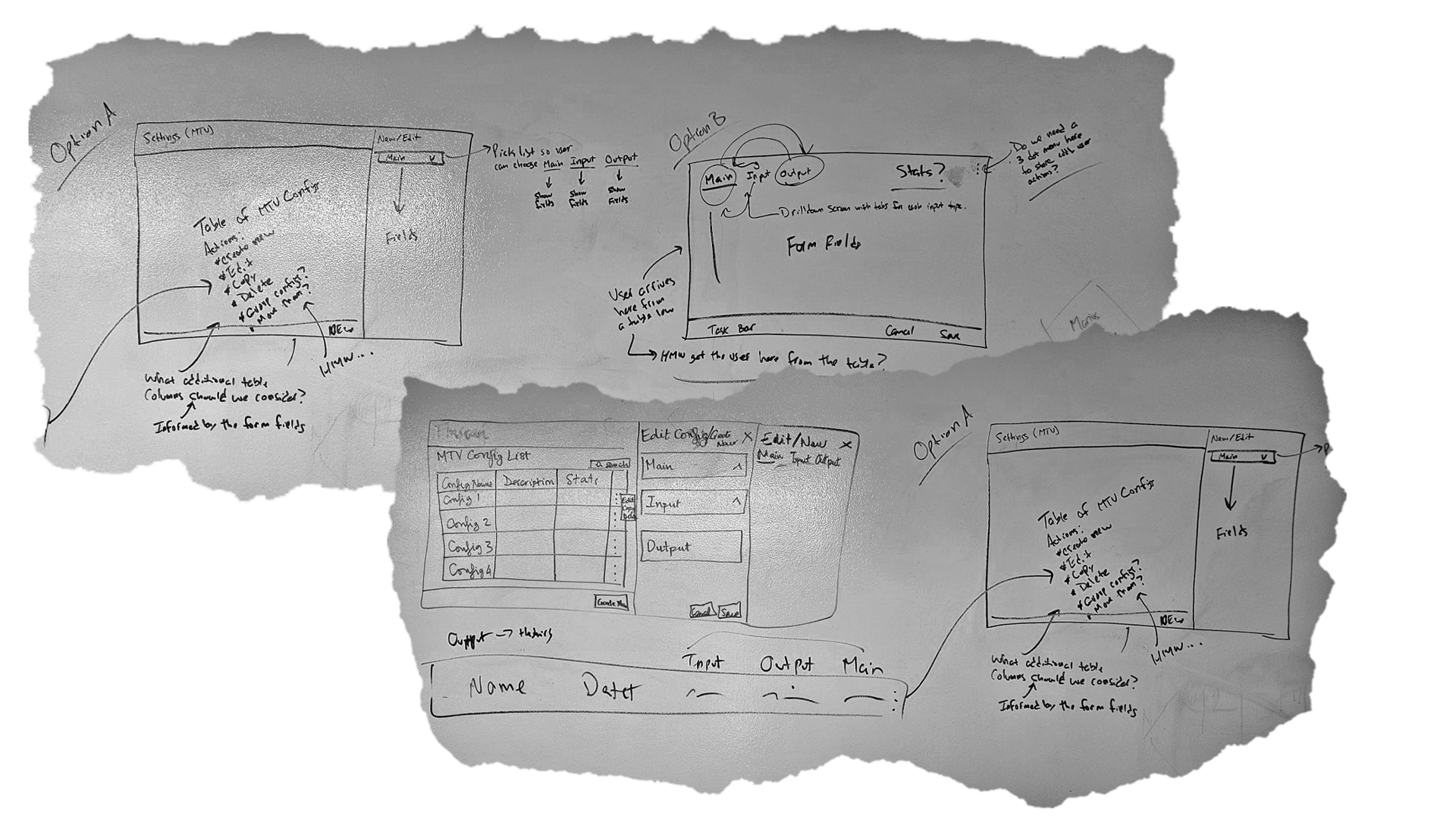
Eventually, I understood where the workflow fragmentation was happening. I created a user flow diagram that:
- Reorganized pages into logical, task oriented sequences
- Introduced a central mapping page
- Integrated rules and processes into the main flow

Prominent ideas I had that incorporated this new userflow.
- Power page approach: Combine all features into one comprehensive interface.
- Guided wizard flow: Shopping cart-style stepped experience.

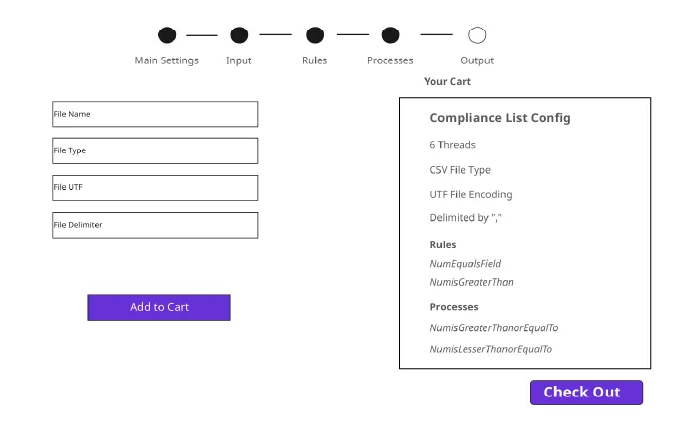
Initially, the power page approach was very appealing. It felt so efficient. However, as I walked my developer interns through the sketch, they immediately raised flags about technical constraints. Senior designers also warned me about overwhelming users with a single, dense screen.
The guided wizard flow was a better option to move forward with.
Prototype
Multiple feedback rounds refined the concept while working within the constraints of an existing design system.
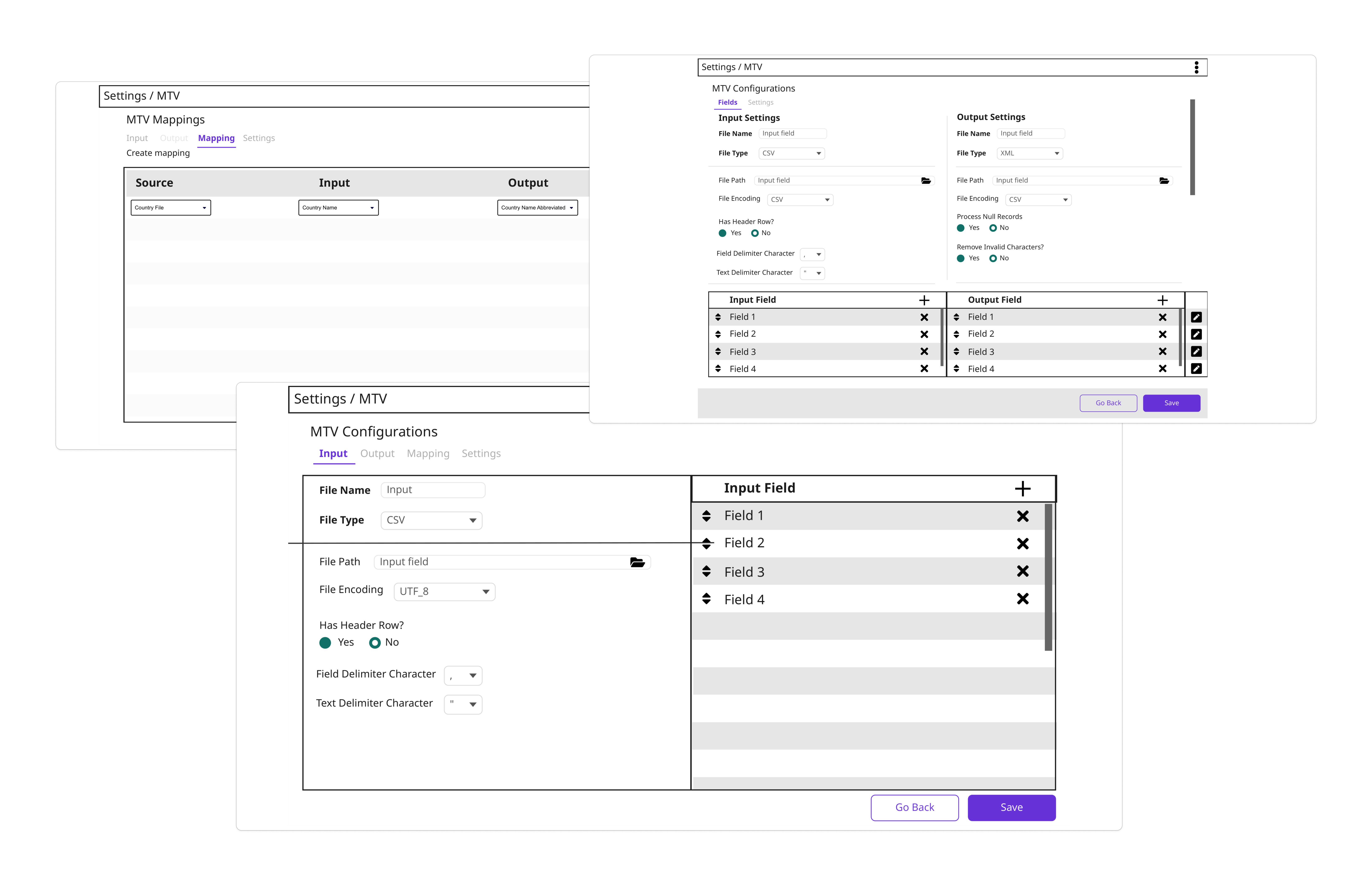
Eventually, I built higher-fidelity prototypes in Miro. These weren’t pixel-perfect but in a fast-paced environment they gave the developers clear patterns to implement using design system components.
The guided wizard flow turned out to be too rigid. The step-by-step wizard felt very restrictive. I instead moved towards tabs which would provide a clear flow but allow the user to work back and forth easier.
Example: Redesigned Input Files Screen
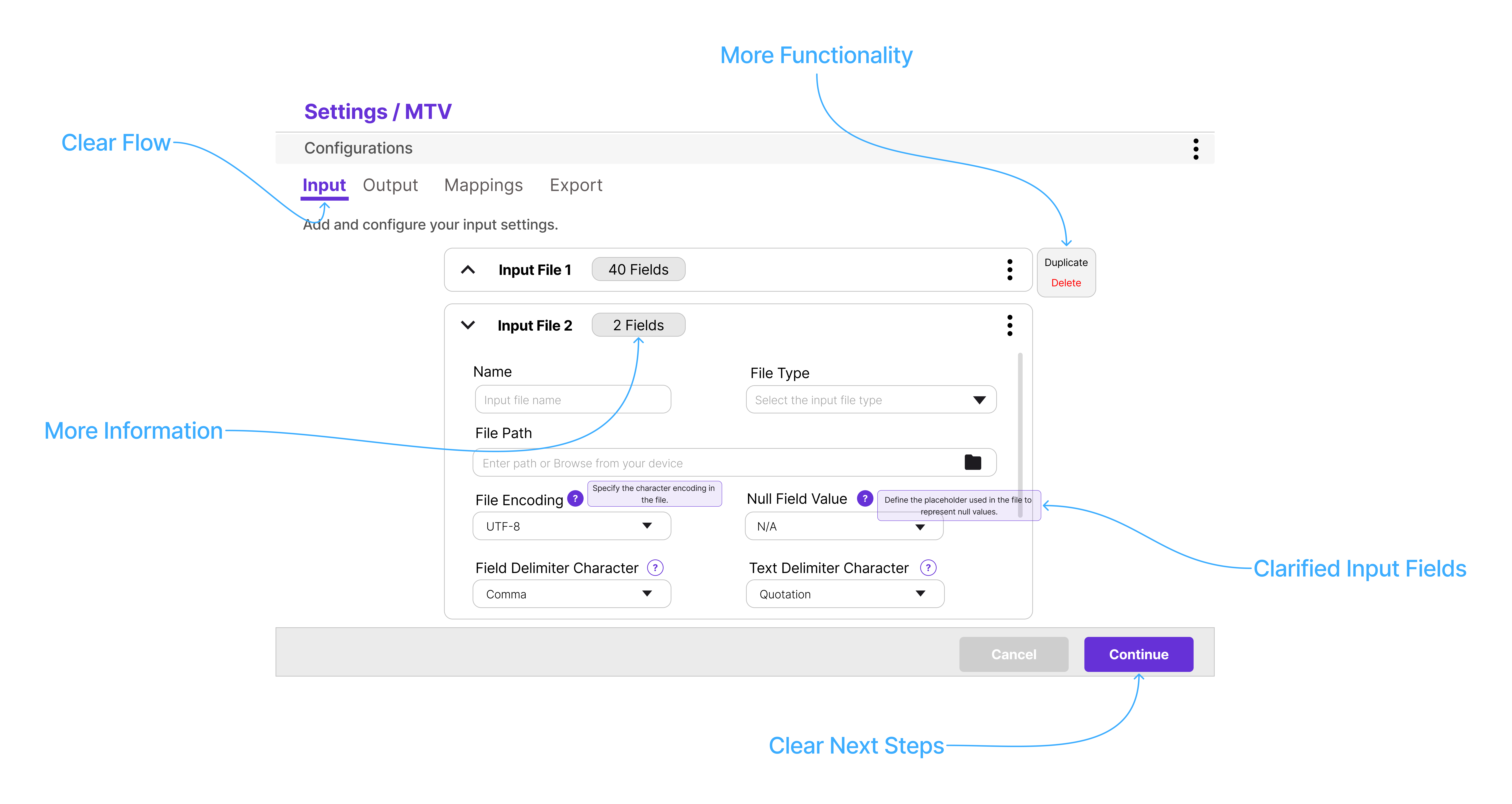
This is the final proposed design for the input screen, which addresses the confusion identified in the original design by clarifying actions and improving the layout.
View a selection of prototype screens
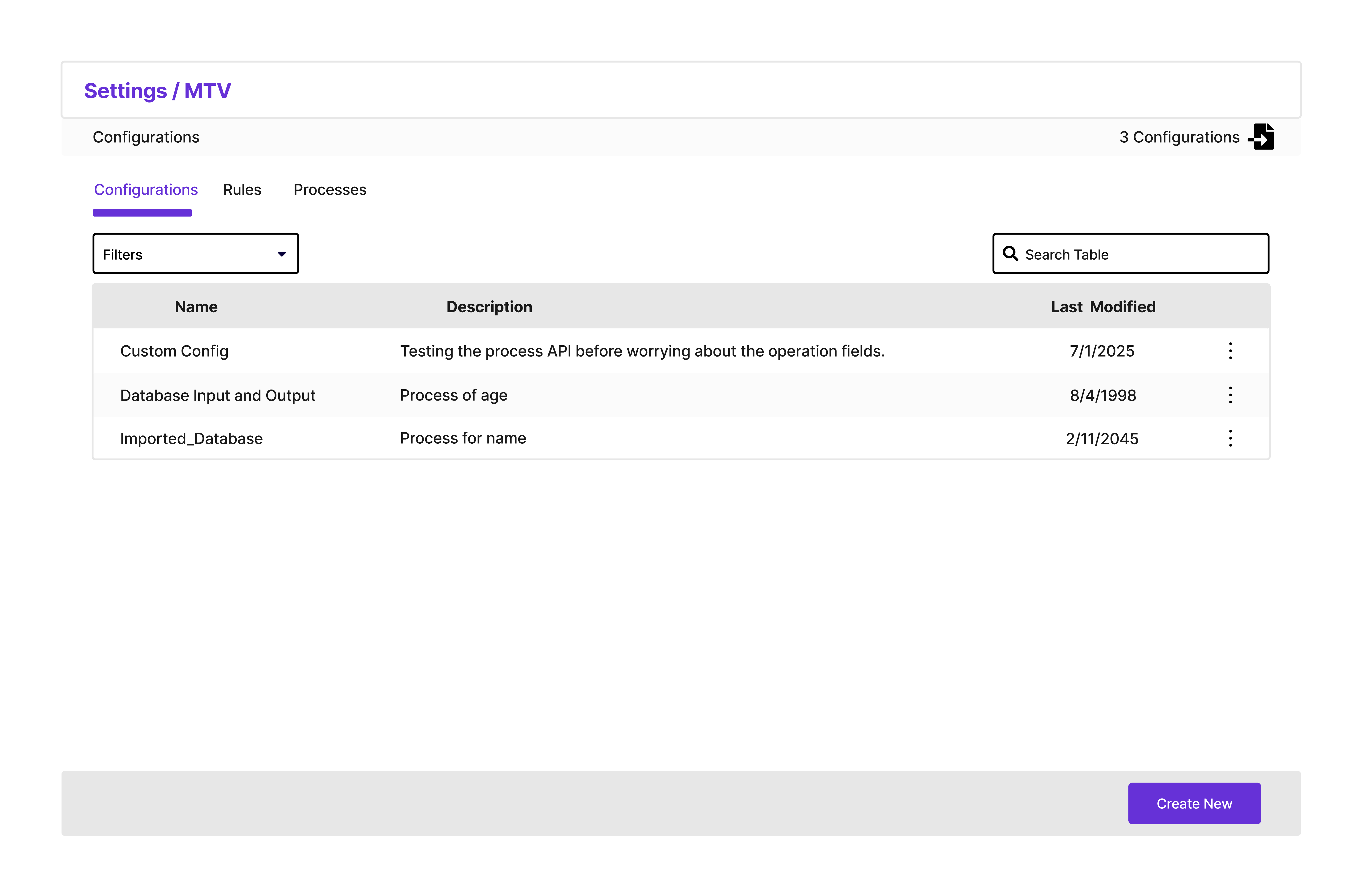
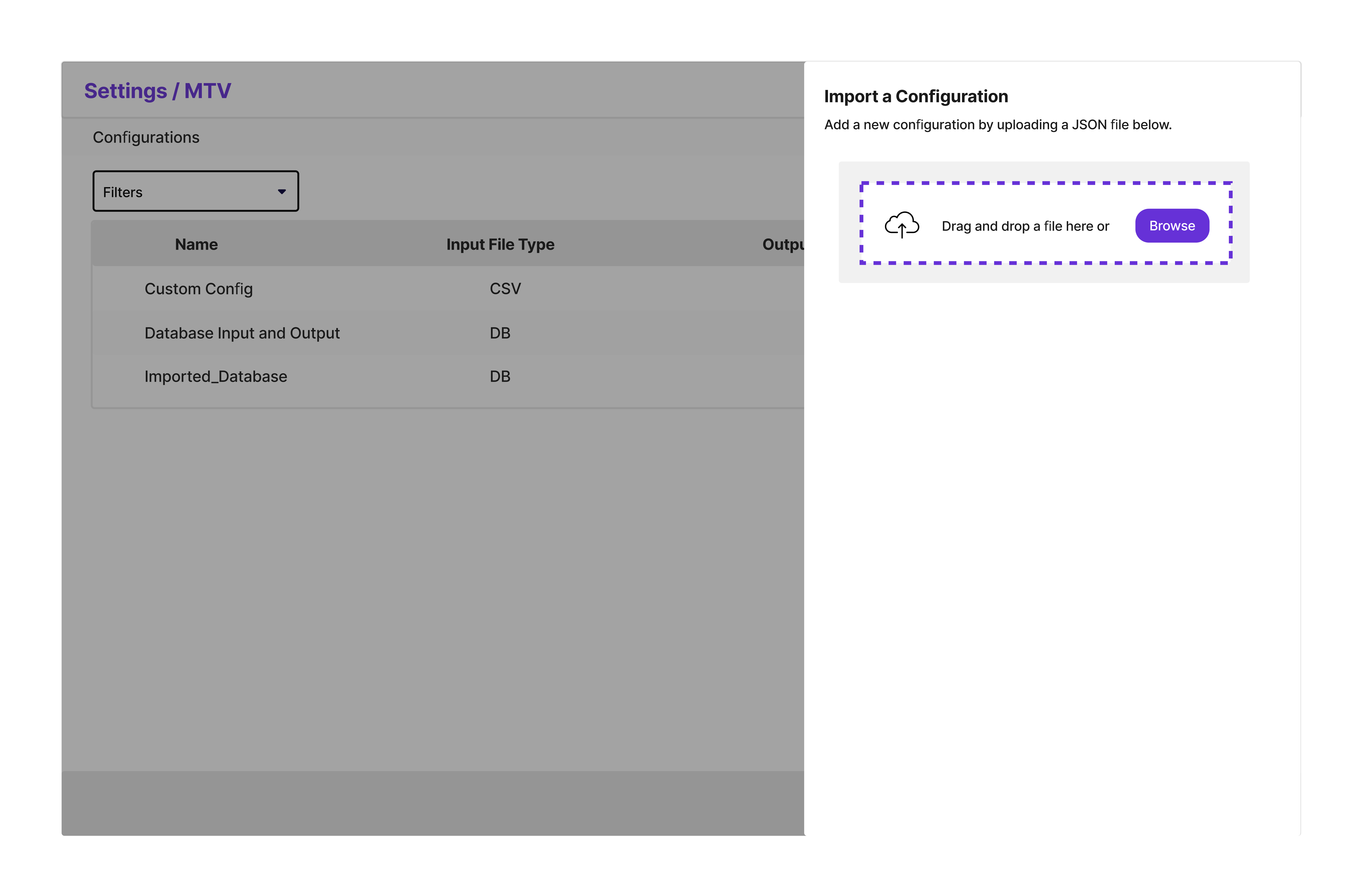
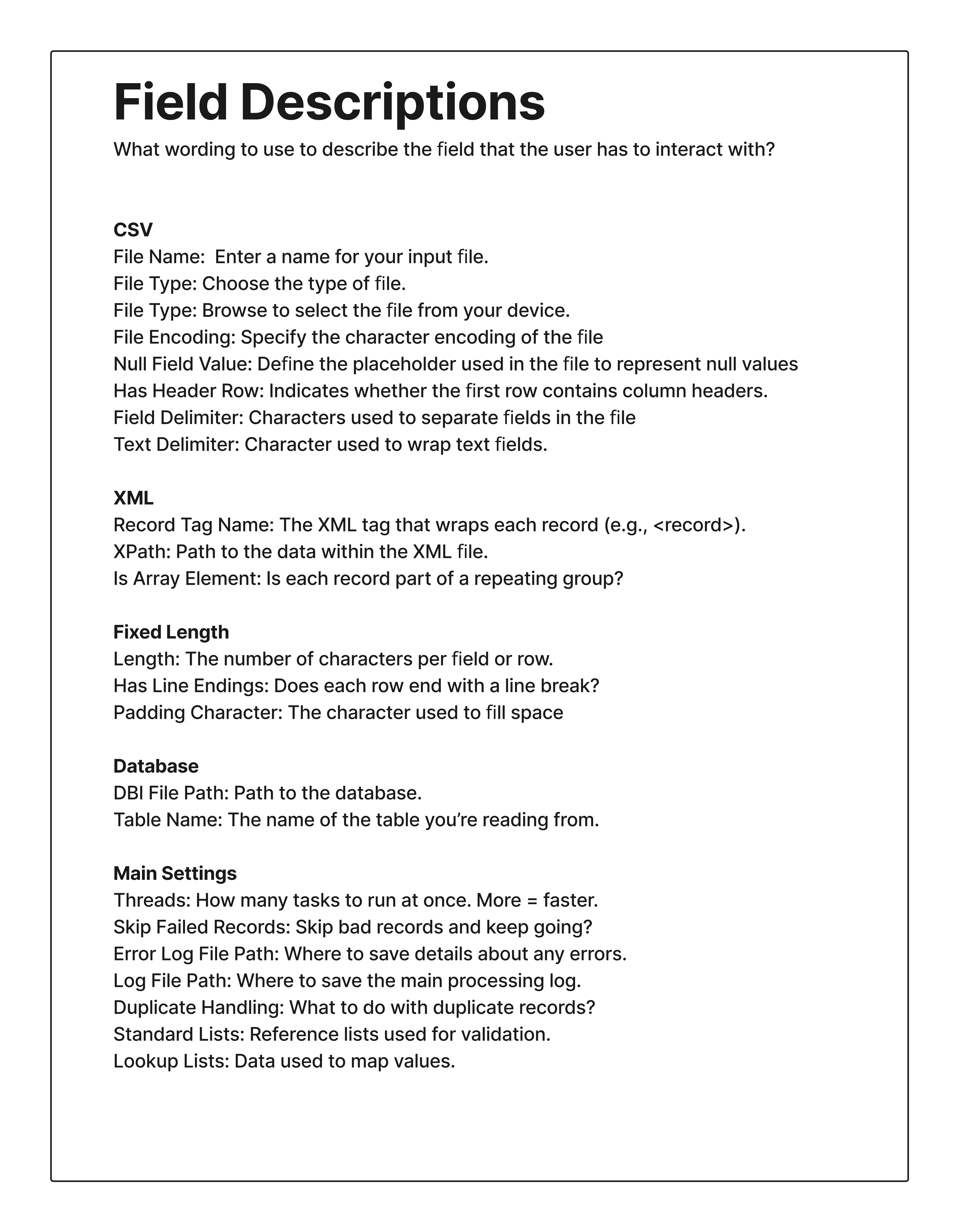
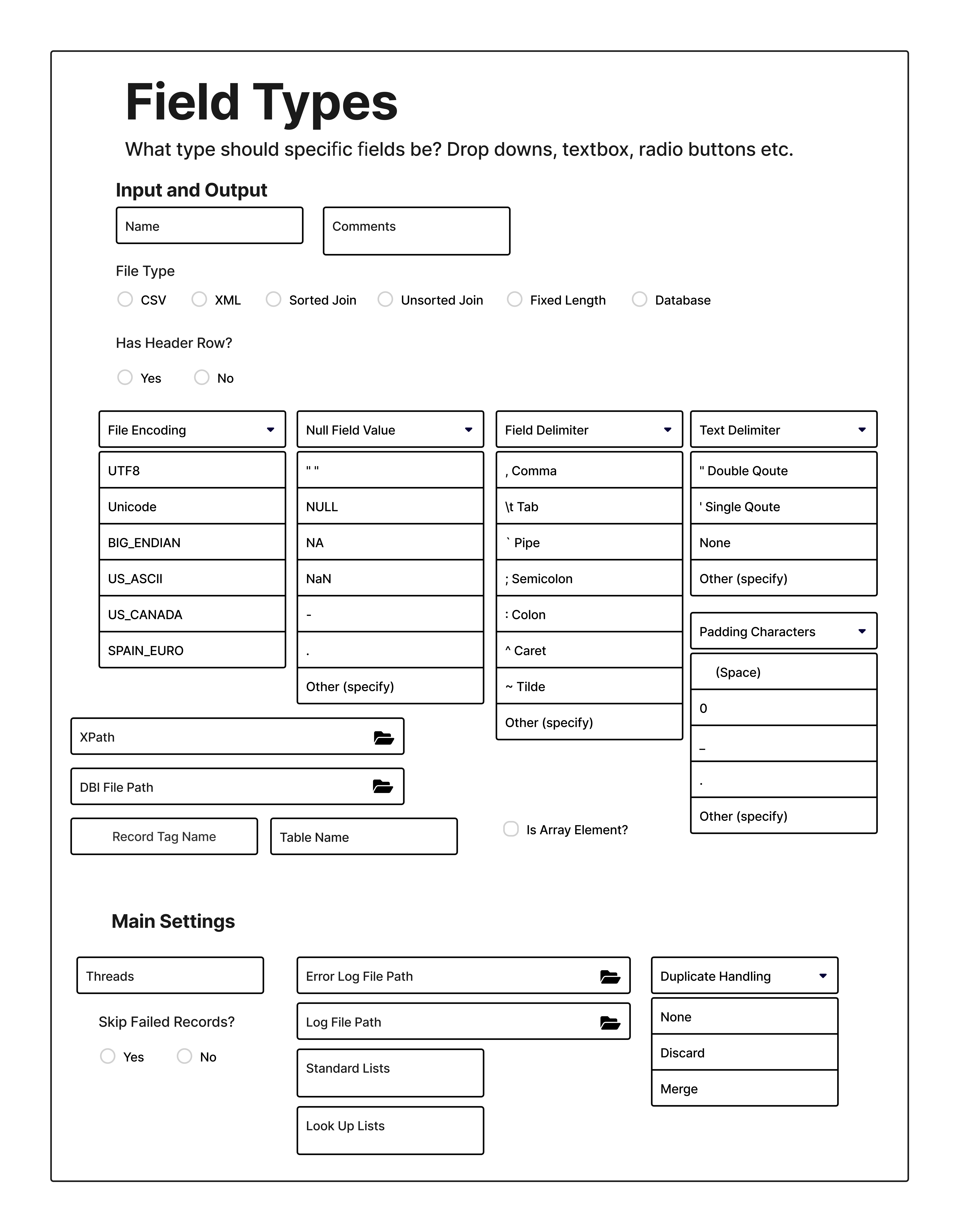
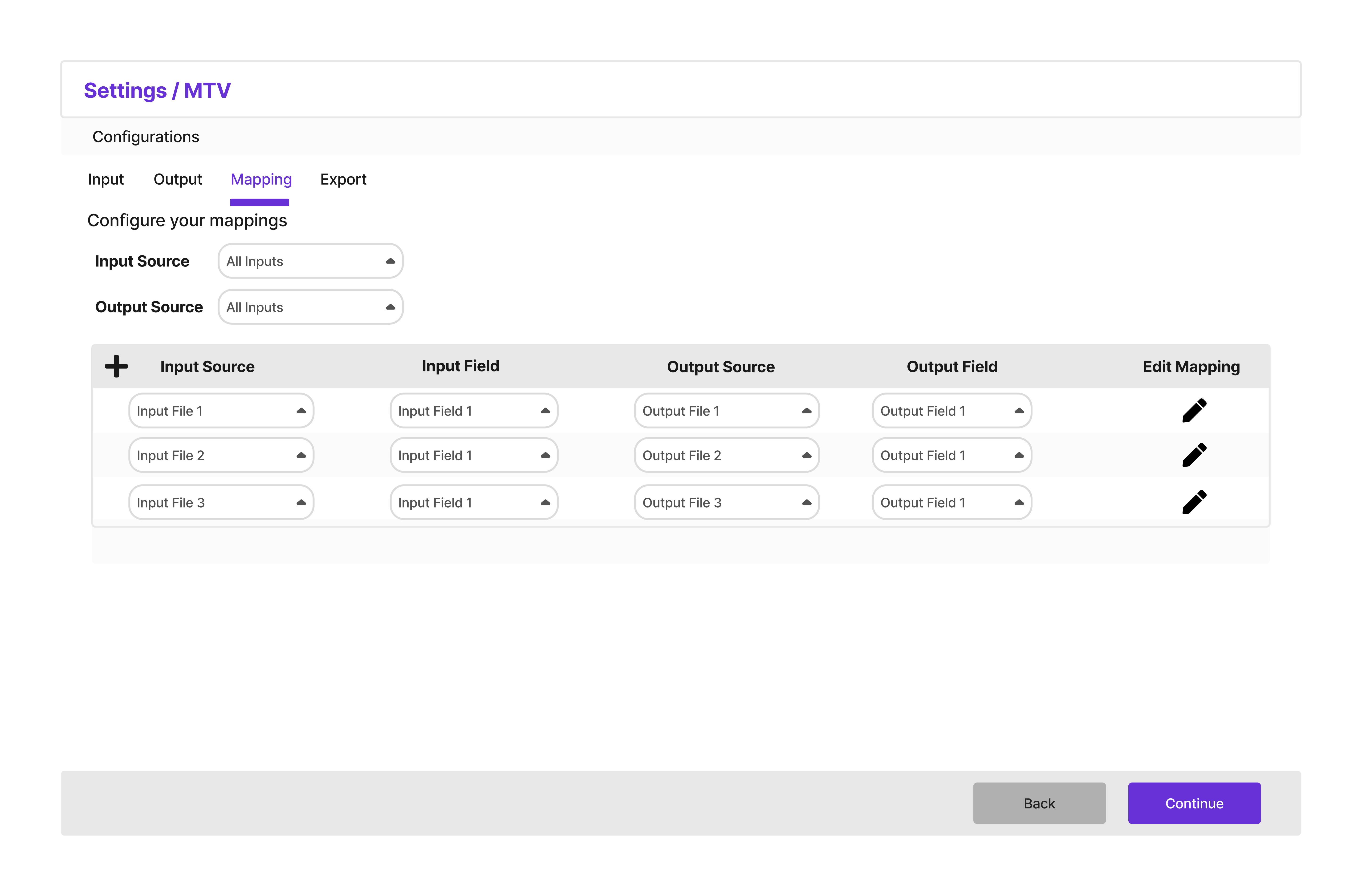
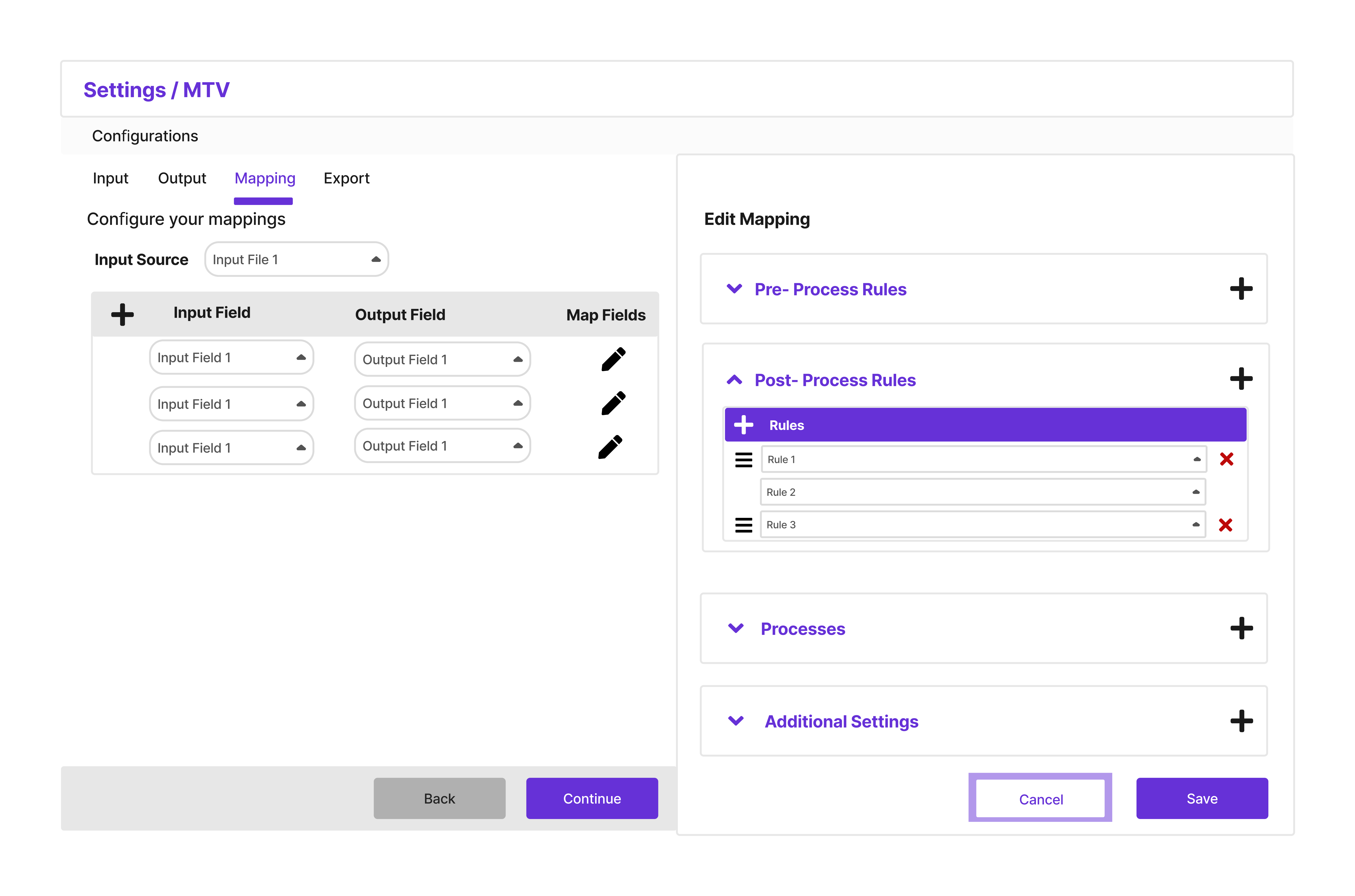
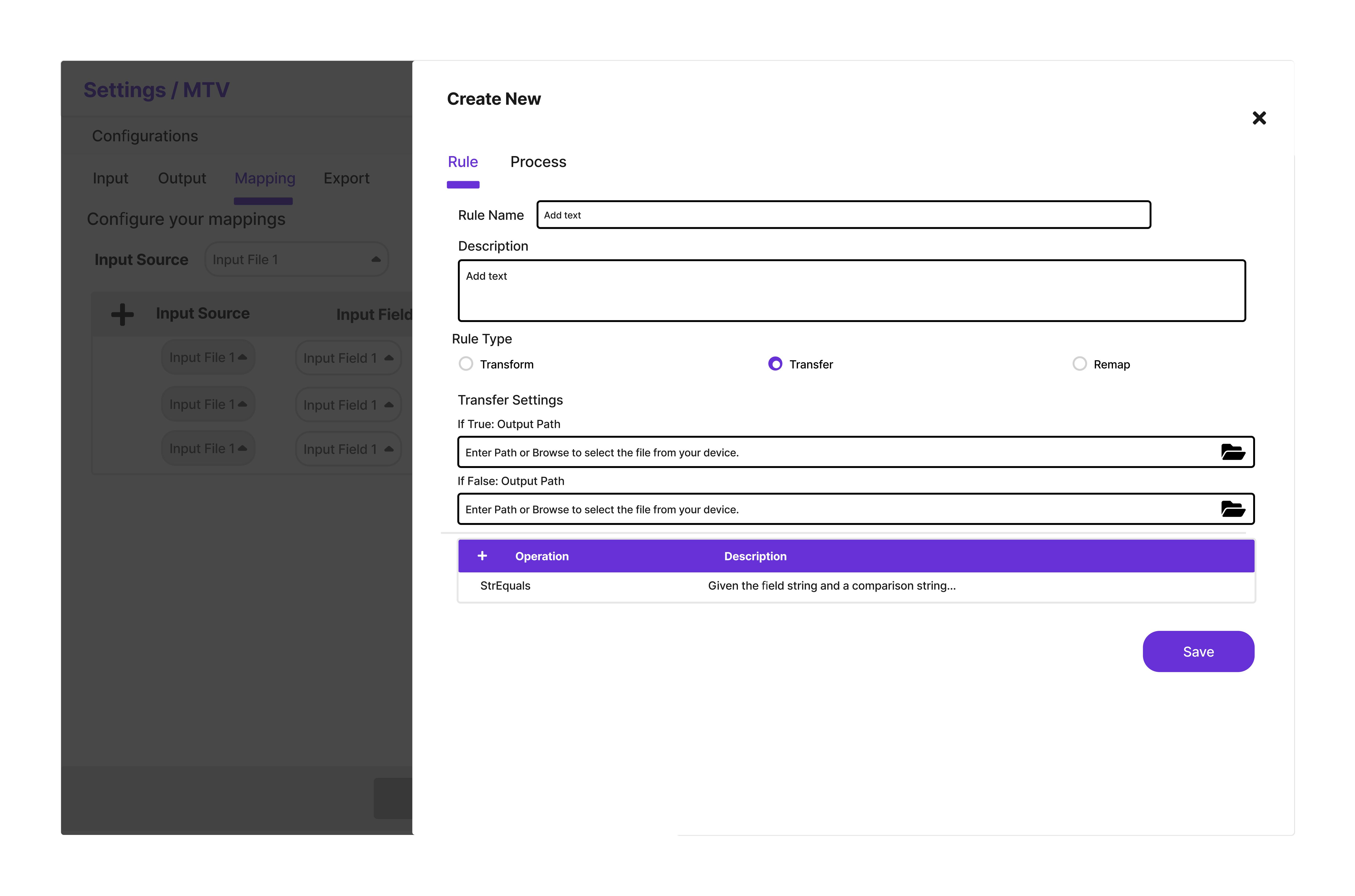
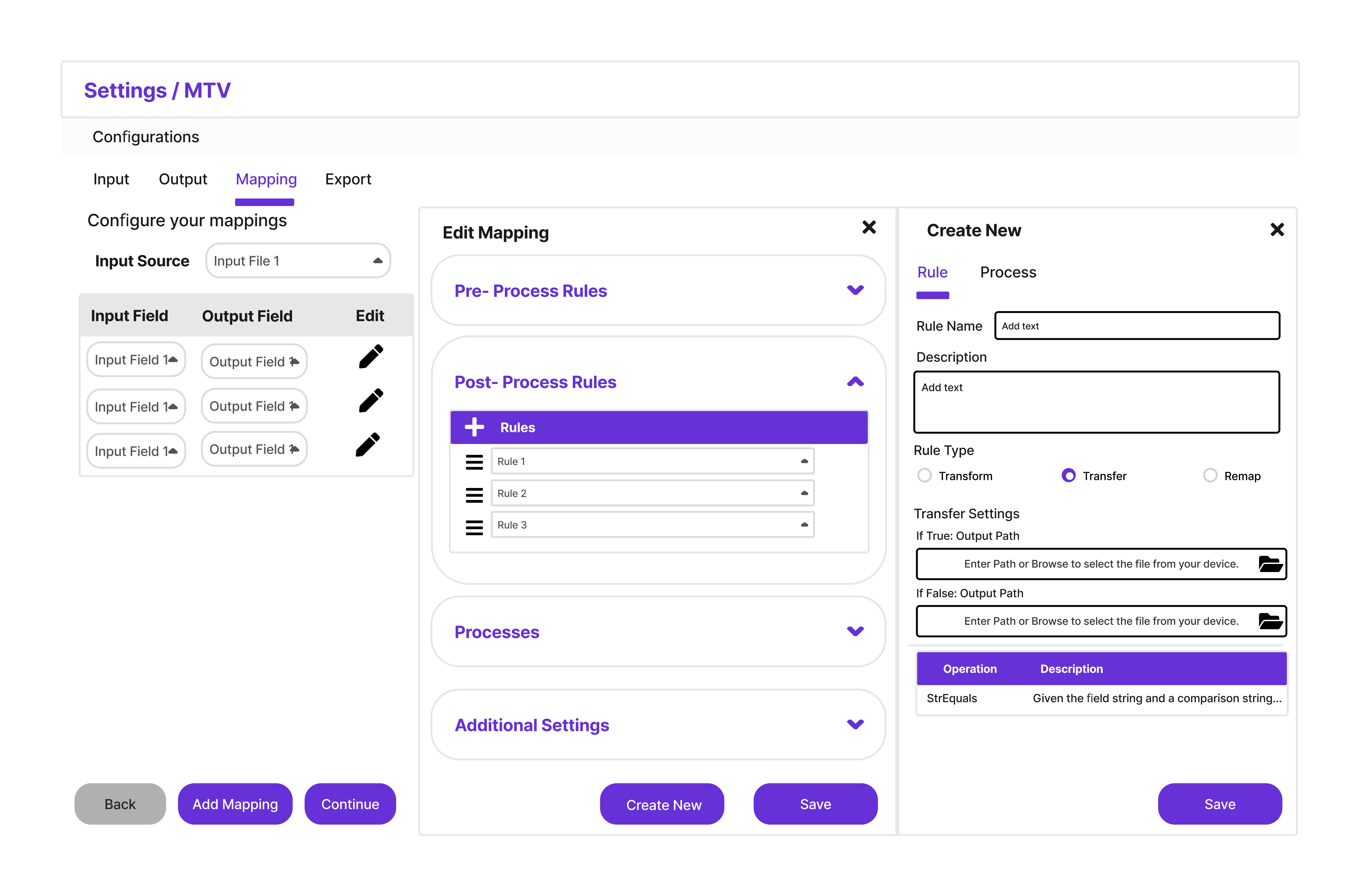
Testing
Near the end of this project, I conducted one usability session.
What Worked
The core concept was a success. The user clearly understood the sequential, tab-based nature of the flow. They navigated through each section and understood what was expected of them, validating the overall structural redesign.
Areas for Improvement
The newly designed mapping page was a major friction point. While the user understood its purpose, they found the interaction model rigid and cumbersome. It was clear this section needed more iteration to meet user expectations.
I was so ready to go back for another round of iteration on the mapping page. Unfortunately, with the internship in its final weeks, time had run out.
Wrap-up
Whether I wanted to or not, I had to package everything up and trust someone else to carry it forward.
I created a comprehensive vision document detailing my process, findings, recommendations for future improvements, and honest assessments of where I'd failed. Presenting it to the full design and engineering team was nerve-wracking, but I got great feedback and even some thumbs up reactions on Teams!
Conclusion & Takeaways
Things I’d Do Differently
Test earlier.
I should’ve tested more earlier on even rough paper sketches that could have validated ideas, saving me from obvious misses.
Time-box from day one.
Oftentimes I’d disappear into rabbit holes for hours or days. Learning to set boundaries was a game changer, but I should have done it from the start.
Think out my stories more.
I should have enhanced them with clearer acceptance criteria so I had a more defined direction. Too often I'd start working without really knowing what "done" looked like.
The Takeaways
Everything is iterative.
Every single phase requires multiple cycles of refinement. I kept thinking I was "done" with research or ideation, only to circle back with new insights.
Figma is not UX.
I never reached polished high-fidelity designs because that's maybe 5% of the work. The real heavy lifting happens in conversations and strategic thinking.
After that final testing session, I tried describing my emotions to a senior designer. The burning need to jump back to sketching based on feedback, pride in what worked, surprise at obvious misses I'd made, disappointment in complete failures. That complex mix of feelings didn't exhaust me; it energized me. I realized this work genuinely excites me, challenges and all.
